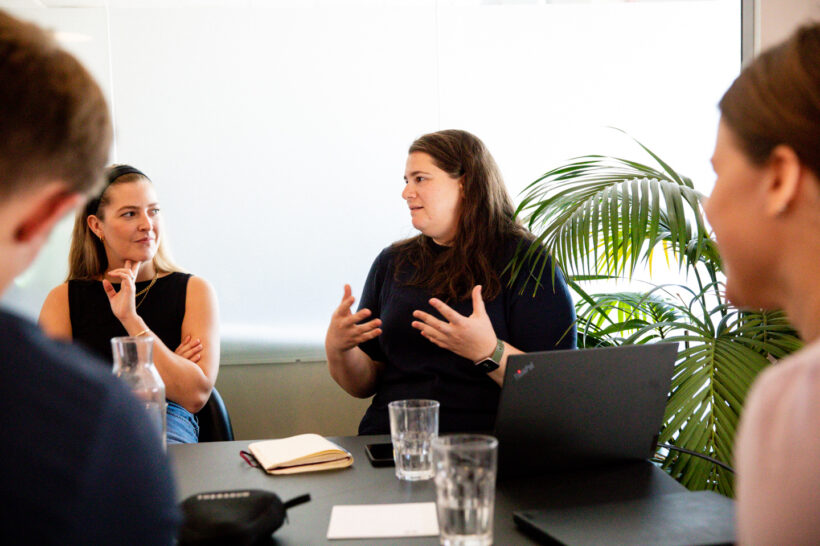What is a bias?
Biases are prejudices or inclinations that help us to create mental shortcuts. Biases allow our brains to skip the effort of processing new information and make decisions based on existing inclinations.
Biases have a role, but it’s limited
Biases are a natural and productive part of our everyday thought patterns. By relying on our existing preferences, we make decisions and process information more quickly than we might otherwise. Biases support our unconscious desire to reduce ambiguity and simplify our lives. This speed and simplicity have kept humans safe for millennia.
We still use biases all the time. The same biases that kept our ancestors safe can help us breeze through the grocery store in no time. But unfortunately, the qualities that make biases helpful in our basic routines can be detrimental and prejudicial in other contexts.
Biases limit our ability to rationally assess decisions. Our full decision-making process takes in a wealth of information from past experiences, assumptions, stored knowledge, and new observations. In shortening this process, we may miss out on or undervalue essential new information. We limit our ability to make the best possible decisions simply because we lack all the relevant information.
Common biases
Learning about common biases is essential in acknowledging how we individually utilize biases. Identifying our own biases can help us to recognize and change our own behaviour.
These five common biases show up frequently at work:
Confirmation bias
Confirmation bias is the inclination to search for, favour, or remember information that supports your own existing arguments and beliefs. Even when there is an abundance of information, we are more likely to interpret that information in a way that aligns with our beliefs.
Confirmation bias is common but harmful in business. The preference for information that supports our existing opinions limits our ability to make fully informed and rational decisions. When we do research to support an idea, rather than generating an idea based on research, we demonstrate confirmation bias. In looking for information that supports our existing opinions, we miss out on potential risks or valuable alternatives. This can be seen across functions, from HR to product development and corporate strategy.
Framing
Framing bias occurs when we make decisions based on how information is presented, rather than on the information itself.
Identical information presented in different ways provokes different responses. Framing can be elicited by a broad range of factors, from sentence phrasing and spin to graphic design, and even who delivers the information.
Framing bias is often intentionally utilized in marketing materials to encourage a specific response. It also occurs at a macroeconomic level as investor behaviours change based on the framing of current events. When we endorse a project because we liked the slides, we could be relying on framing bias.
Priming
Priming bias is when our response to one event is unconsciously affected by a prior event. When we respond to a stimulus, it primes our memory to more easily recall or utilize associated information. For example, if a person is presented with the word “eat” and is subsequently asked to fill in the missing third letter in the word “so p”, they are more likely to write “soup” than “soap”.
There are numerous types of priming because our brains associate information in many ways. Priming can occur through any of our senses, and images, text, audio, and tactile stimuli can all elicit priming bias.
Priming can prompt us to make unconscious decisions. This type of priming is sometimes a goal of marketing efforts that create specific associations with a product or drive purchasing through frequent brand exposure. While priming can also be used positively to encourage transparency, fairness, or healthy choices, it inherently simplifies our decision-making process, often without our knowledge.
WYSIATI
WYSIATI is an acronym for “what you see is all there is.” This acronym, coined by Daniel Kahnemann, refer to our brain’s tendency to make judgements according to the information we have available. Our minds quickly form a coherent picture – even when the information is incomplete.
In this process, our brain neither manages to question the data quality nor availability. This is commonly demonstrated in our first impressions of new people. We make a split-second assessment of a new individual or group based on the inadequate information we have immediately available to us, like their facial features or body language. But we continue to rely on our impressions moving forward, which perpetuates our own prejudices.
We are inclined to make a quick decision based on the information available, rather than considering the information that we do not have. In the office, this easily translates to prejudicial hiring practices, high-risk investments, and poorly chosen projects.
The Halo Effect
The Halo Effect occurs when a positive impression of one aspect of a person positively influences our opinion or feelings about other aspects of that person. Although it is commonly applied to people, the halo effect also applies to companies, products, and other things.
A common example of the halo effect is our tendency to associate charisma with competence. We assume that charismatic individuals are better leaders, managers, or simply more knowledgeable. These assumptions lead us to value these individuals or their opinions more highly. But competence and charisma are not correlated. A charismatic individual could be a brilliant visionary, but they could just as easily be uninformed or worse.
The halo effect has implications across decision-making, but its impact is especially notable in hiring, firing, and promotions. Our initial positive impressions are often based on our own prejudices and preferences and have no connection to the ability of an individual to do their work. When there are opportunities for the halo effect to impact our decisions, we are likely to perpetuate prejudices and biases instead of reducing them.
Education is the first step
There is no easy solution to addressing our biases. Establishing institutional processes, increasing data-based decision-making, and encouraging diverse perspectives can all help. But without adequate attention, our biases can be perpetuated by our processes and data too. We all have biases that can easily become traps in our modern lives.
Learning about common biases is the first step toward reducing our reliance on biases. Recognizing common biases in ourselves can help us to identify why and when we use them and take steps toward improving our decision-making in those circumstances.
By reflecting on our own beliefs and learning from those around us, we can mitigate the risks of our unconscious biases.
Are you unsure how bias training fits into your ESG goals? Are you ready to report on your ESG activities, including diversity, equity, and inclusion (DEI)? Read more about our work with ESG reporting or reach out to learn how we can help your company plan for changing ESG needs.
Skal I implementere initiativer vedrørende Diversity, Equity & Inclusion (DEI), men er I i tvivl om, hvordan I skal dele dette med jeres interessenter? Og ønsker I at rapportere på jeres ESG aktiviteter, herunder DEI? Bliv klogere på vores arbejde med ESG rapportering, eller kontakt os for at høre mere om, hvordan vi kan hjælpe jeres virksomhed med ESG











